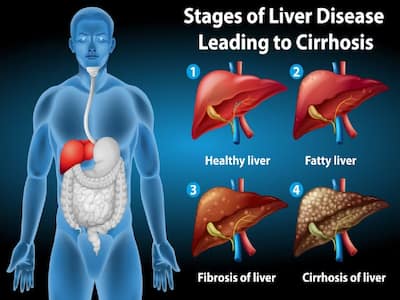
Individuals with both diabetes and liver disease are at a higher risk of developing liver cancer. Read on to know how diabetes and liver disease are connected.
Diabetes mellitus (DM) and liver disease often go hand in hand, with type 2 diabetes posing as a distinct risk factor for chronic liver conditions. In fact, around 30 per cent of patients with cirrhosis, a severe liver disease, also have diabetes. This condition is known as “hepatogenous diabetes.”
In the article, Dr ZahirAhmad Kutubuddin Patwekar, M B B S, D N B, Family Medicine, PG Diploma In Diabetology, explains the connection between diabetes and liver disease.
The Link Between Diabetes and Liver Disease
Insulin resistance and hyperinsulinemia contribute to the development of diabetes in liver disease. Certain liver conditions, including fatty liver disease, alcoholic cirrhosis, chronic hepatitis C, and hemochromatosis, are more commonly associated with diabetes. Insulin resistance can also affect the response to hepatitis C treatment and the progression of liver scarring.
Impact on Clinical Outcomes
Diabetes in cirrhotic patients has distinct characteristics compared to type 2 diabetes alone. It is less often associated with complications like small blood vessel damage but more frequently linked to complications of liver disease. Studies have shown that diabetes increases the risk of death in individuals with liver disease[1]. However, managing diabetes in cirrhotic patients can be challenging due to liver damage and potential side effects of diabetes medications on the liver.
Screening and Management
Regular screening for liver disease and diabetes is crucial, especially for individuals with risk factors such as obesity, high blood pressure, and high cholesterol. Screening methods may include ultrasound examinations, liver function tests, and monitoring of blood glucose levels. Healthcare providers should develop personalised management plans that consider liver health and choose appropriate diabetes medications to minimise the impact on the liver[2].
There are no defined recommendations regarding the frequency of testing or the appropriate age for undergoing tests, still healthcare professionals recommend doing the liver screening after every 6 months. It is advisable to contemplate undergoing a liver function test even more frequently in the following situations: if you have a familial background of liver problems, if you are struggling with alcoholism.
Diabetes as a Risk Factor for Liver Cancer
Growing evidence suggests that diabetes is a significant risk factor for liver cancer, particularly hepatocellular carcinoma (HCC). Individuals with both diabetes and liver disease are at a higher risk. Therefore, effective diabetes management, regular screening for liver cancer, and early intervention are vital to improve outcomes and reduce the burden of liver cancer.
READ RELATED: What Drinking Wine Every Day Does To Your Body
Understanding the connection between diabetes and liver health is essential for both healthcare providers and individuals with diabetes. Regular screenings for liver disease, proper diabetes management, and lifestyle modifications can help mitigate risks and improve overall health outcomes. By addressing diabetes and liver health proactively, we can take significant steps toward preventing and managing liver disease and its complications.
[1] Stepanova, Maria et al. “Patients With Diabetes and Chronic Liver Disease Are at Increased Risk for Overall Mortality: A Population Study From the United States.” Clinical diabetes : a publication of the American Diabetes Association vol. 35,2 (2017): 79-83. doi:10.2337/cd16-0018
[2] Gin s P, Castera L, Lammert F, Graupera I, Serra Burriel M, Allen AM, Wong VW, Hartmann P, Thiele M, Caballeria L, de Knegt RJ. Population screening for liver fibrosis: toward early diagnosis and intervention for chronic liver diseases. Hepatology. 2022 Jan;75(1):219-28.
Total Wellness is now just a click away.
Follow us on
Don’t Miss Out on the Latest Updates.
Subscribe to Our Newsletter Today!
window.addEventListener(‘load’, (event) => {
$(‘#commentbtn’).on(“click”,function(){
(function(d, s, id) { var js, fjs = d.getElementsByTagName(s)[0]; if (d.getElementById(id)) return; js = d.createElement(s); js.id = id; js.src = “//connect.facebook.net/en_US/sdk.js#xfbml=1&version=v2.3”; fjs.parentNode.insertBefore(js, fjs);}(document, ‘script’, ‘facebook-jssdk’));
$(“.cmntbox”).toggle();
});
});










